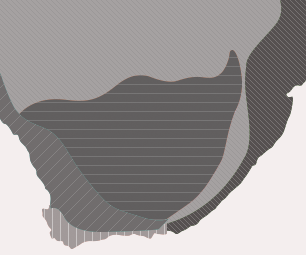Treculia africana
Treculia africana Decne. ex Trécul
Family: Moraceae
Common names: African breadfruit, African breadnut, African boxwood, wild jackfruit (English), ukwa (Igbo), mwaya (Swahili)
Introduction
Treculia africana, a fast-growing, multipurpose tree, usually found in forest, along streams or in swampy areas at an altitude up to 1 500 m. It holds remarkable potential for sustainable agriculture and food security due to its nutrient-rich seeds and adaptability to diverse ecological conditions.

Description
Description
Treculia africana is a large, evergreen tree with a dense spreading canopy, that usually grows 10-30 m tall. This plant species has a single stem with irregular vertical ridges. The bark is smooth, grey with whitish markings, leaking white sap when it is cut. The leaves are large, lanceolate to oblong, leathery, dark green above and lighter below with little hairs on the veins. The margin is entire and slightly rolled under. The leaves are arranged alternately. The petiole is short, to 100 mm long.

Male and female flowers are separate but borne on the same tree. Male flower heads are club-shaped and female flower heads are globose, 25–100 mm in diameter. The newly emerging flowers are whitish, while the matured flowers are brownish to yellowish. They occur in the axils of the leaves, and on older plants they occur on the stems or trunk (August to October). The fruits are big and hard with a spongy texture, covered with the blackened remains of the stigmas (November to January). The fruit can grow up to 400 mm in diameter, about the size of the football. Each fruit can weigh up to 8–14 kg and contains many seeds in a spongy pulp. They are greenish brown when mature and turn greenish yellow when ripe. The seeds are large, orange or yellowish, and 8 mm long.

Three varieties of Treculia africana are recognised: var. africana, var. inversa, and var. mollis. The difference is the size of the fruits; var. africana produces large fruits, var. mollis medium-sized fruits and var. inversa produces small fruits.
Conservation Status
Status
Treculia africana is not indigenous in South Africa and therefore is not listed on the SANBI Red List of South African Plants. According to the International Union for Conservation of Nature (IUCN) Red List of Threatened Species, the status of Treculia africana is Least Concern (LC) with a decreasing population trend and deforestation causing some fragmentation, but it is a common species that is widespread in Africa with a relatively low rate of exploitation, most of which are not destructive. Its threats are logging, wood harvesting and deforestation. In some countries, in particular Nigeria and Ghana, this plant species is highly endangered and its population is declining at an alarming rate because of overharvesting and deforestation which is putting increased pressure on the population.

Distribution and habitat
Distribution description
Treculia africana grows along streams and in wet areas in forest at an altitude of up to 1 500 m above sea level. This plant species is found in riverine, mixed evergreen and swamp forest and in woodlands. It can grow in different types of soil, including loamy soil, but prefers rich, deep soil with high capacity to hold water. It can grow very well in part shade, full shade and in full sun. Treculia africana tolerates a wide range of climatic conditions, it can grow in tropical or subtropical regions where the mean annual rainfall ranges from 1 250–3 000 mm and the annual temperature ranges from 25–35°C. This plant species cannot survive in regions that experience cold winters with frost. Treculia africana is native in tropical Africa and Madagascar. It occurs from Senegal to South Sudan in the north to Angola, Zambia, Malawi and Mozambique in the south.

Derivation of name and historical aspects
History
Treculia africana belongs to the Moraceae, known as the Mulberry or Fig family, a large and significant family consisting of 47 genera and over 1 100 species. This family includes trees, shrubs, lianas and some herbs, notable for their milky latex, compound inflorescence and often large, edible fruits.
The genus Treculia is named in honour of Auguste Trécul , a nineteenth century French botanist. The species name africana means ‘African’ because it is native to Africa. The common name African breadfruit refers to the tree's large, edible fruits, whose seeds are a source of starch.

Ecology
Ecology
Treculia africana grows in tropical and subtropical climates. This plant species adapts easily, it can grow in different types of soils and climatic conditions, and it is a drought-tolerant plant, all of which make it a low maintenance plant in cultivation.
The pollinators of Treculia africana are unknown but most plant species that belong to the Moraceae family are pollinated by small insects. The seeds are edible and dispersed by small animals, human beings, and chimpanzees and blue monkeys, which break open and eat the fruits.

Uses
Use
Treculia africana is used in traditional medicine to treat various ailments. The bark extract is used to treat cough and whooping cough. Water extracted from the roots is used to inhibit the development of secondary complications of type 2 diabetes. The bark can be grounded into powder, mixed with oil and other parts of the plant can be used to treat swellings, leprosy and as a laxative. In Ghana the milky sap of male Treculia africana is used to treat affected teeth by the disease. Crushed leaves are used to treat throat infections and thrush in children. The milky sap is used as an antibacterial agent in eardrops and the juice from the leaves can be used as ear drops. Livestock and wild animals feed on Treculia africana fruits, seeds, bran and leaves. Culturally this tree is used to make wood for fire, pulp and furniture, carving, turnery and inlay woods. The wood is used to make fuel and charcoal.
In horticulture Treculia africana is used to control soil erosion and to restore forests (reforestation), leaves are used for mulching, it used in home gardens as a shade tree and it is used for intercropping systems in agroforestry.
Treculia africana seeds are used as a source of food, they can be dried, ground and used in soups, stews, in combination with rice, maize and yams, to bake bread and make pasta, baby food and they can also be cooked or eaten as dessert nuts . These seeds have great value when it comes to diet because they contain more protein than soya beans. A consumable oil can be extracted from the seeds. From the same powdered seeds, a non alcoholic drink and almond milk can be made which is drunk with breakfast in Nigeria.
Growing Treculia africana
Grow
Treculia africana can be propagated by seeds, cuttings, budding and shield grafting. The seeds should be collected, cleaned to remove impurities and sown when they are still fresh. The highly recommended sowing mix is medium sand and fine sand. Keep the seed trays moist and warm. Germination will start after 9 days. Seedlings should be transplanted after four weeks into topsoil mixed with poultry manure, in individual pots and placed under 80% shade netting. Seedlings should be watered three times a week in summer and twice a week in winter.
Stem cuttings should be taken from a 1 year old mother plant, using a sharp and clean cutting tool, and treated with growth hormones to stimulate root development. Treculia africana stem cuttings should be propagated in a medium river sand.
Treculia africana usually grows in full shade or part shade in a forest, in a clay soil or medium loamy soil with a pH of 5.0 to 7.5. At Lowveld National Botanical Garden this plant species grows in full sun in a loamy soil. The water requirement for this plant species when it is established is moderate and it can tolerate water stress but seedlings require frequent irrigation at least twice a day. Organic fertilizer should be applied twice a year for optimum growth.
Treculia africana is not recommended to be planted next to the house because the large fruits falling from the tree can cause injury to humans and damage to the property. Treculia africana can be used as wind breaker against storm and as flood control. In terms of water and sun requirements, Treculia africana can be planted together with Anthocleista grandiflora, Syzygium cordatum, Breonadia salicina and Raphia australis.
This plant is prone to fungal diseases which cause fruit rot, which drastically reduces the yield of Treculia africana and can be treated with an appropriate fungicide. Seeds stored at a temperature of 30–35°C are at risk of rotting.
References
- Ayomide, O. & Yisau, J. 2022. Early Growth Assessment of Treculia africana Seedlings Influenced by Different Light Intensities and Mycorrhizal Inoculation. bioRXiv 2022.10.04.510781.
- Borokini, T.I. & Hills, R. 2021. Treculia africana. The IUCN Red List of Threatened Species. https://dx.doi.org/10.2305/IUCN.UK.2021-2.RLTS.T87717226A87717230.en.
- Breadfruit Online. The traditional and medicinal uses of African breadfruit (Treculia africana Decne): an underutilized ethnic food of the Ibo tribe of South East Nigeria. https://www.breadfruitonline.com. Accessed 02/09/25
- Chukunda, F.A. & Stephen, O.U. 2015. Studies of seed-borne pathogens of African breadfruits (Treculia africana Decne). International Journal of Agriculture and Earth Science 1(8).
- Dolor, D.E. 2013. Propagation of Treculia africana as influenced by seed storage and propagation media. Agricultura Tropica et Subtropica 46(2):52-57.
- iNaturalist. African Breadfruit (Treculia africana). https://inaturalist.org/taxa/133947-Treculia-africana. Accessed 17/09/2025.
- Ojimelukwe, P.C. & Ugwuona, F.U. 2021. The traditional and medicinal use of African breadfruit (Treculia africana Decne): an underutilized ethnic food of the Ibo tribe of South East, Nigeria. Journal of Ethnic Foods 8(21).
- Orwa C, Mutua A, Kindt R, Jamnadass R. & Simons A. 2009. Treculia africana. Agroforestree Database version 4.0. World Agroforestry Centre, Kenya. https://apps.worldagroforestry.org/treedb/AFTPDFS/Treculia_africana.PDF.
- Plants For A Future. Treculia africana. https://pfaf.org/user/Plant.aspx?LatinName=Treculia+africana. Accessed 02/09/2025.
- Plants of the World Online. Moraceae. https://powo.science.kew.org/taxon/urn:lsid:ipni.org:names:30000043-2. Accessed 24/9/25.
- Useful Tropical Plants. Treculia africana. https://tropical.theferns.info/viewtropical.php?id=Treculia+africana. Accessed 01/09/2025.
Credits
Winfred Ngwenya and Laureen Mudzwiri
Lowveld National Botanical Garden
October 2025
Acknowledgements: The authors thank Ekeleme-Egedigwe A. Chima for granting permission to use the picture of the seeds in this article.
Plant Attributes:
Plant Type: Tree
SA Distribution:
Soil type: Clay, Loam
Flowering season: Spring
PH:
Flower colour: Green, White
Aspect: Full Sun, Shade, Morning Sun (Semi Shade), Afternoon Sun (Semi Shade)
Gardening skill: Easy
Special Features:
Horticultural zones







Rate this article
Article well written and informative
Rate this plant
Is this an interesting plant?
Login to add your Comment
Back to topNot registered yet? Click here to register.